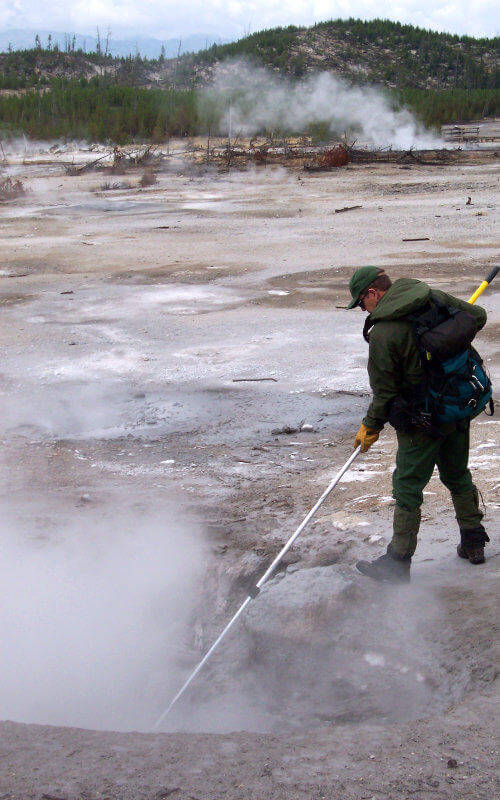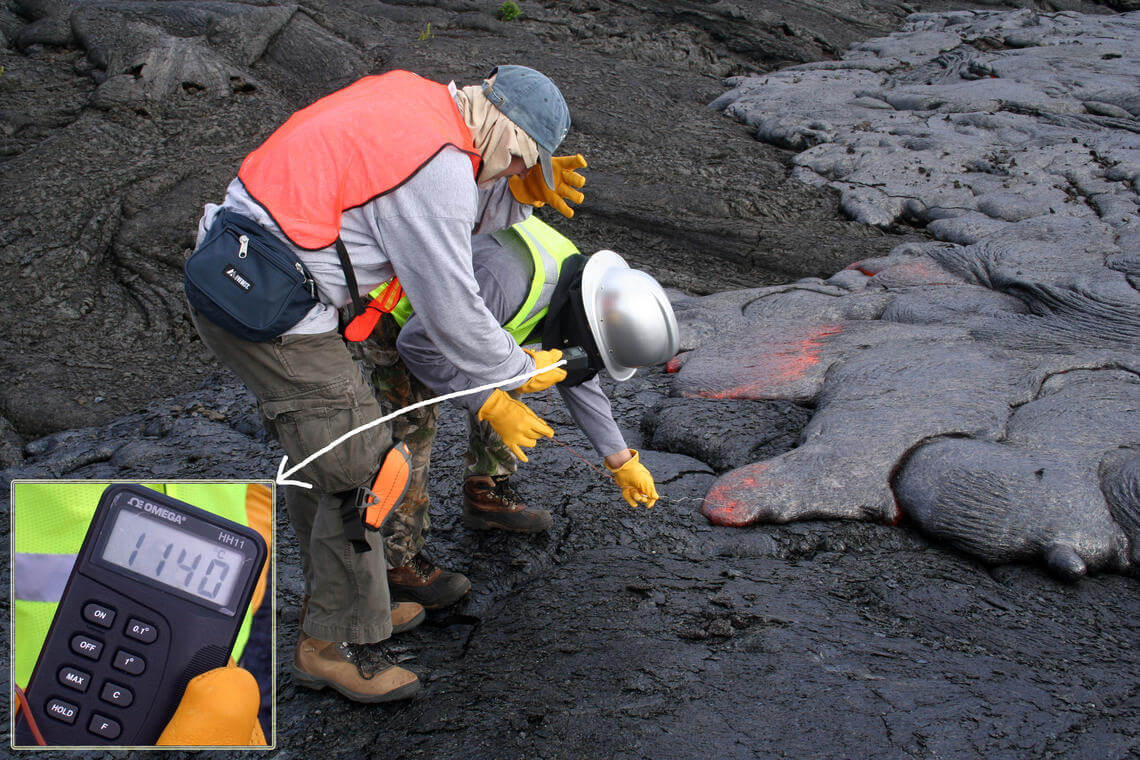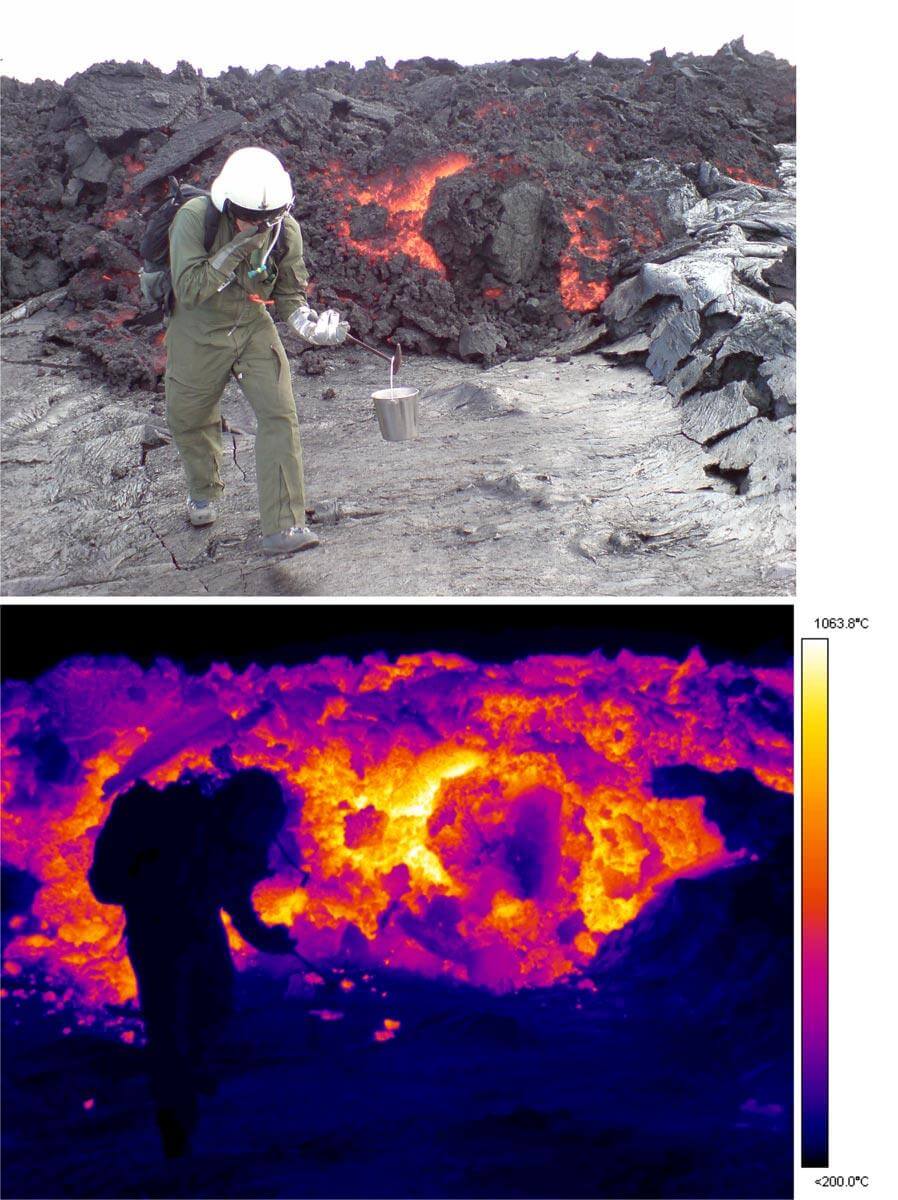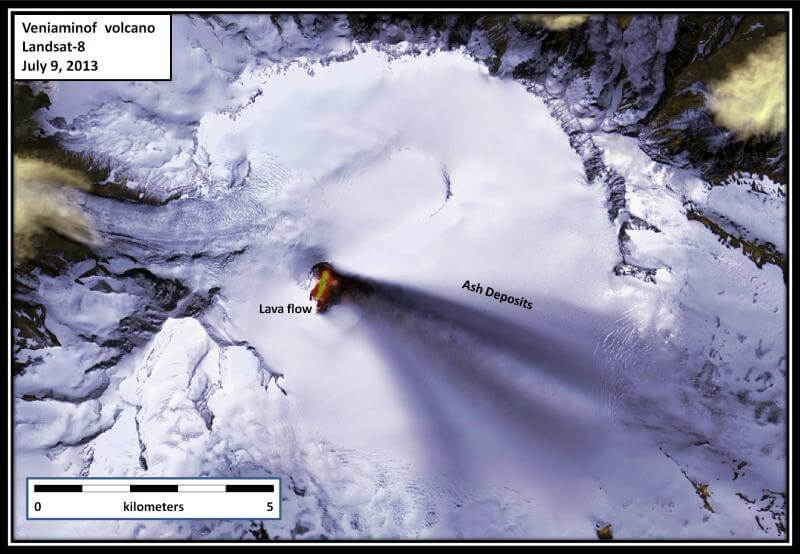BUILDING RISK KNOWLEDGE
WHY THE FOUNDATION WAS BORN? >
WHY THE FOUNDATION WAS BORN? >
DISASTERS ARE NOT NATURAL, they are socially built, due to lack of preparation, prevention, mitigation work, education and monitoring. They are natural risks or hazards that impact vulnerable societies. Knowledge help reducing social and structural vulnerability in order to have more resilient societies!
Some volcanoes have thermal features such as smoking vents, geysers, hot springs, lava flows or lava domes. Surface temperature changes at these thermal features sometimes occur before a volcanic eruption. Recognition of these “thermal anomalies” can be useful in predicting changes in activity.
Several thermal features are worth noting

Norris-2003. a YVO scientist takes a temperature measurement at “Son of Green Dragon” thermal feature.
Directly measuring the temperature of hot spring basins, fumarole fields, or active lava flows can be dangerous. For very precise measurements, scientists place devices called thermocouples directly onto the hot surface of a thermal feature. Such measurements are most often made at volcanoes that are easily accessible, and scientists only conduct the measurements if the areas are safe to be in for several minutes. Although direct measurements are very precise, they are limiting because they can only cover a small or specific area.
Temperature measurements can also be made remotely using cameras or instruments that measure thermal infrared radiation, which is emitted from the heated surface. However, TIR radiation can be partially or completely obscured by thick clouds or ash plumes, so these types of measurements must be made under favourable atmospheric conditions. A common instrument used by scientists in the Volcanic Hazards Programme is a front-facing (thermal) infrared camera, which produces an image using a colour spectrum that correlates with the detected temperature.
This image shows an HVO geologist sampling the lava that was seeping out of the interior of the rootless shield. The lava was placed in a bucket of water to quench the sample. The top frame is a normal photograph, while the bottom frame is a thermal image taken within a fraction of a second of the photograph. As the thermal image shows, the incandescent interior of the flow, which is exposed as lava clinker spalls off, exceeds 1000 degrees Celsius (1800 degrees Fahrenheit). The geologist is shielding his face from the radiant heat.


This is an important tool for monitoring remote volcanoes with few ground facilities. Some satellite sensors make daily or semi-daily observations over volcanoes, but these sensors record images of large areas with low resolution, which limits the small-scale detail that can be seen of thermal features. More detailed, higher resolution TIR images can be obtained from satellite and airborne sensors, but observations are generally less frequent.

Composite satellite image of Veniaminof Volcano (Alaska) collected by Landsat-8 with short-wave infrared data to show thermal emissions from the active lava flow overlain onto a visible wavelength image. An eruption began in June, 2013 with lava effusion and ash emission, followed by a lull in activity. The active lava flow is shown in shades of yellow and orange, and extends southward from the vent. Thin deposits of volcanic ash are seen on the snow and ice, as radial spokes that form when ash is emitted under changing wind direction.
VOLCANO ACTIVE FOUNDATION RESPONSABILITY
nº 2195 authorised by the Madrid's Minister of Justice
NIF G67314625
SF Abocados Francesc Macia 7 pl17
08029 Barcelona, Spain
We may request cookies to be set on your device. We use cookies to let us know when you visit our websites, how you interact with us, to enrich your user experience, and to customize your relationship with our website.
Click on the different category headings to find out more. You can also change some of your preferences. Note that blocking some types of cookies may impact your experience on our websites and the services we are able to offer.
These cookies are strictly necessary to provide you with services available through our website and to use some of its features.
Because these cookies are strictly necessary to deliver the website, refusing them will have impact how our site functions. You always can block or delete cookies by changing your browser settings and force blocking all cookies on this website. But this will always prompt you to accept/refuse cookies when revisiting our site.
We fully respect if you want to refuse cookies but to avoid asking you again and again kindly allow us to store a cookie for that. You are free to opt out any time or opt in for other cookies to get a better experience. If you refuse cookies we will remove all set cookies in our domain.
We provide you with a list of stored cookies on your computer in our domain so you can check what we stored. Due to security reasons we are not able to show or modify cookies from other domains. You can check these in your browser security settings.
These cookies collect information that is used either in aggregate form to help us understand how our website is being used or how effective our marketing campaigns are, or to help us customize our website and application for you in order to enhance your experience.
If you do not want that we track your visit to our site you can disable tracking in your browser here:
We also use different external services like Google Webfonts, Google Maps, and external Video providers. Since these providers may collect personal data like your IP address we allow you to block them here. Please be aware that this might heavily reduce the functionality and appearance of our site. Changes will take effect once you reload the page.
Google Webfont Settings:
Google Map Settings:
Google reCaptcha Settings:
Vimeo and Youtube video embeds:
The following cookies are also needed - You can choose if you want to allow them:
You can read about our cookies and privacy settings in detail on our Privacy Policy Page.
PRIVACY POLICY